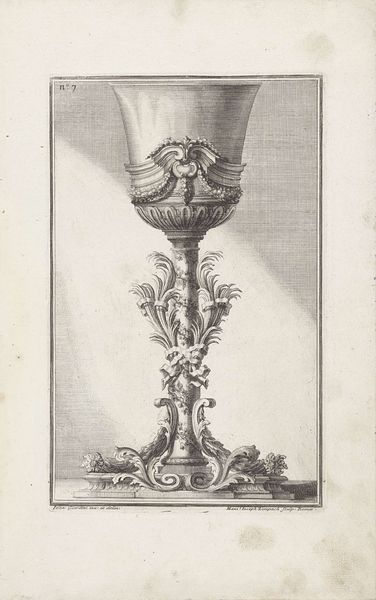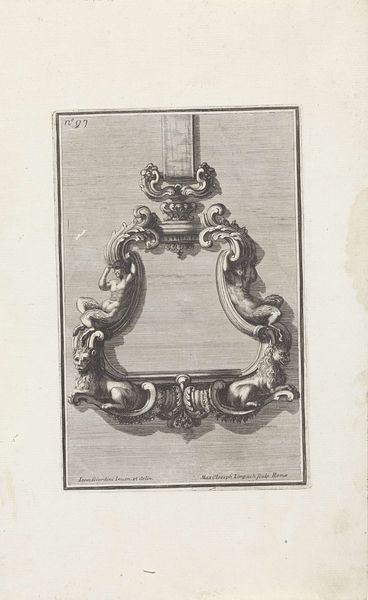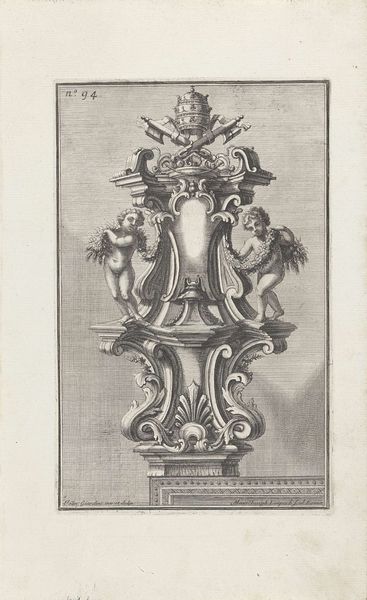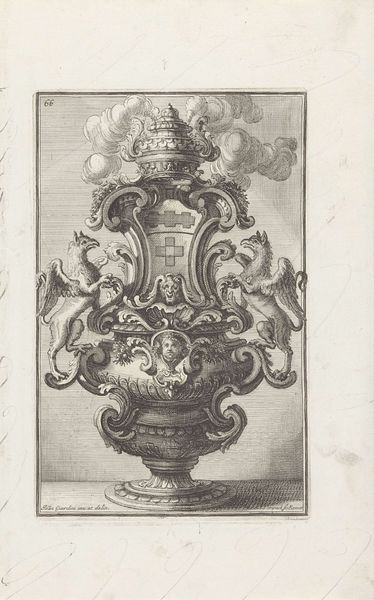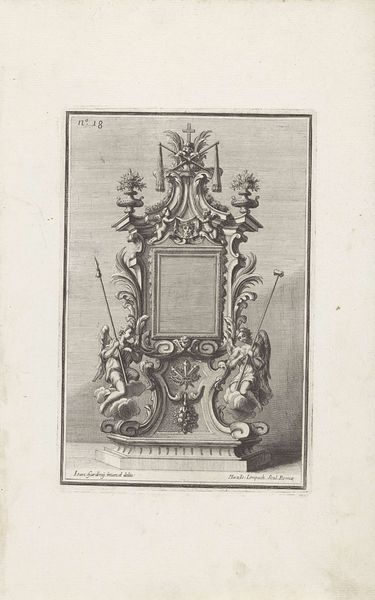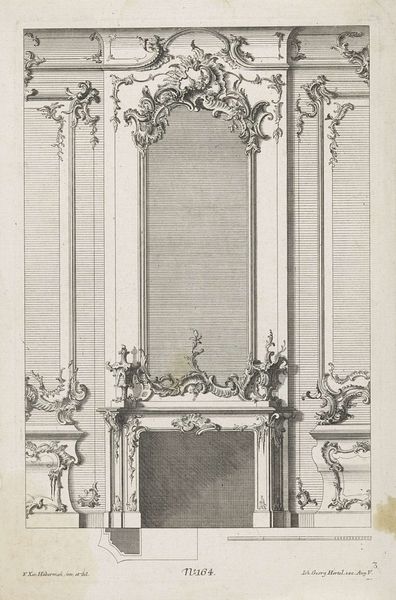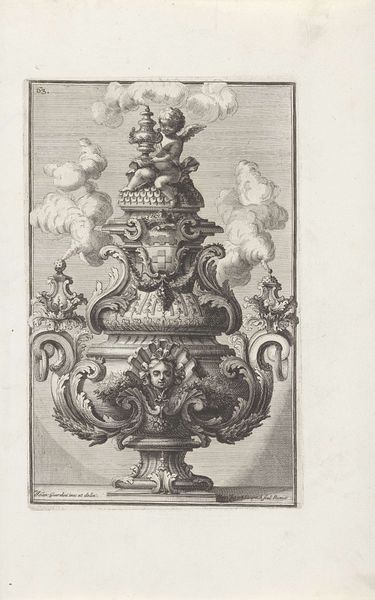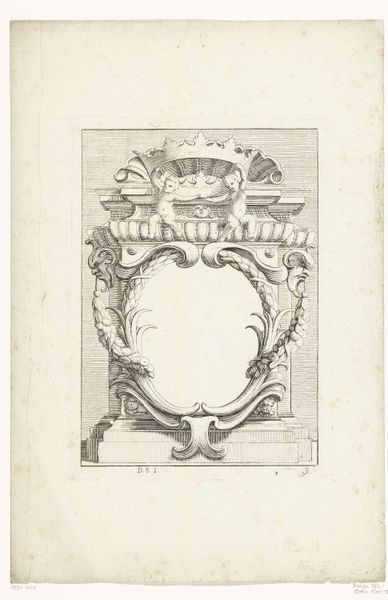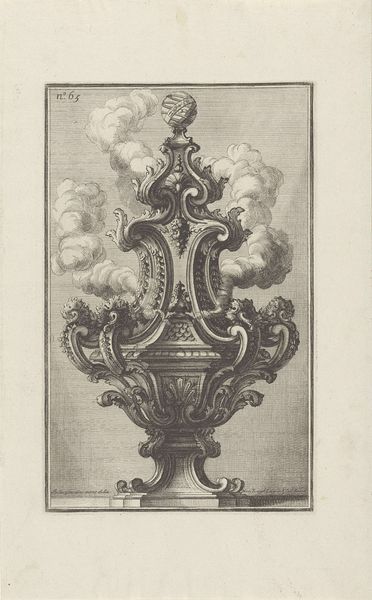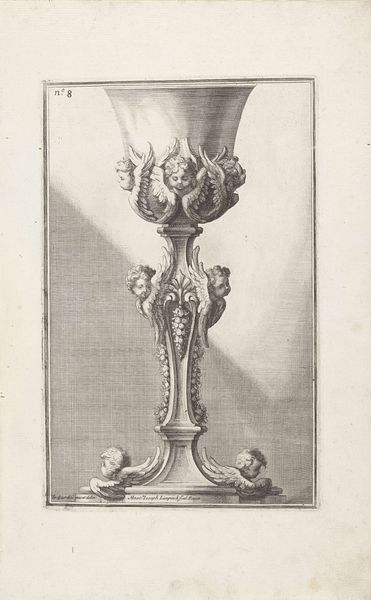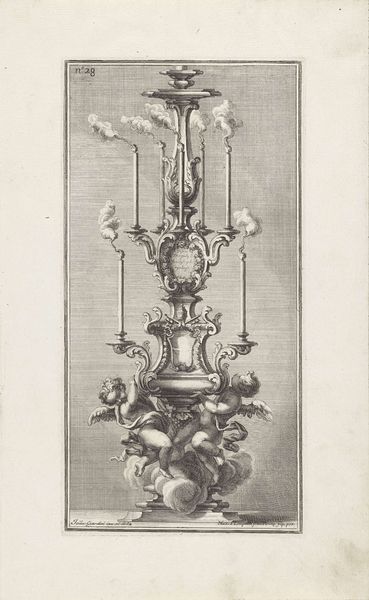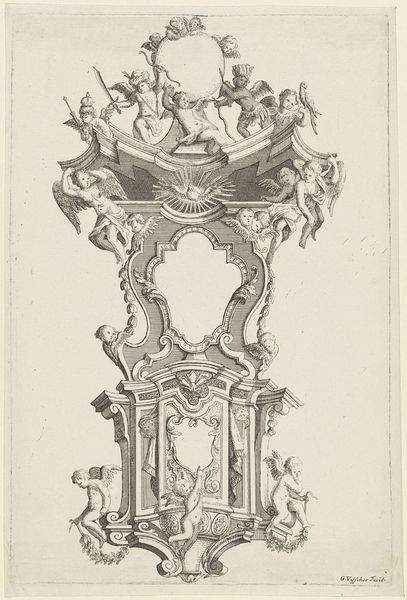
metal, engraving
#
baroque
#
metal
#
old engraving style
#
form
#
line
#
history-painting
#
engraving
Dimensions: height 267 mm, width 170 mm
Copyright: Rijks Museum: Open Domain
Editor: This is "Graftombe met putti en de Arma Christi," made in 1714 by Maximilian Joseph Limpach. It's an engraving, and it strikes me as a very elaborate and symbolic design. What jumps out at you when you look at it? Curator: Well, immediately, I consider the historical context. In the Baroque era, particularly within religious art, we see a fascination with ornamentation used as a persuasive tool. This engraving, likely a design proposal, hints at the grandeur desired for funerary monuments. The putti, those chubby cherubs, and the Arma Christi, symbols of Christ’s suffering, all serve to evoke an emotional response. It makes you wonder about the intended patron and what kind of public image they sought to project through their final resting place. Editor: That's interesting, the idea of a "public image" even in death! How did socio-political forces influence the creation of these designs? Curator: Immensely! Funerary monuments were powerful statements of status and piety. A family’s influence and wealth were literally cemented in stone, shaping perceptions long after they were gone. Designs like this one were subject to trends dictated by both artistic movements and societal expectations. It would be important to consider who commissioned this design; their social standing would impact its visibility and reception. Did it challenge, reinforce or ignore accepted public perception? Editor: I hadn't considered it from that angle. I was just focusing on the visual aspects. But you are right to bring this into social historical perspective. Thank you! Curator: My pleasure! Considering the public life of art allows for the creation of even more dynamic narratives than concentrating only on an object itself.
Comments
No comments
Be the first to comment and join the conversation on the ultimate creative platform.
